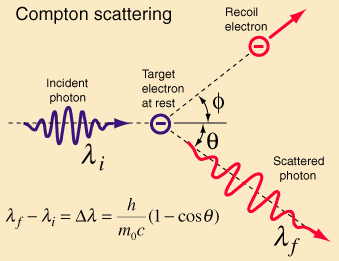-
 GMT
GMT
-
 Nucleoside triphosphate
Nucleoside triphosphate
-
 Magnet
Magnet
-
 Efficacy
Efficacy
-
 Loop
Loop
-
 Melamine
Melamine
-
 Mortar
Mortar
-
 Transcriptome
Transcriptome
-
 Allele
Allele
-
 True coordinates
True coordinates
-
 CHAP
CHAP
-
 Decibel
Decibel
-
 Celestial meridian
Celestial meridian
-
 Cellulose
Cellulose
-
 Single-flow CMV
Single-flow CMV
-
 Windrow
Windrow
-
 Laminin
Laminin
-
 ROT-13
ROT-13
-
 Juvenile water
Juvenile water
-
 Affiliation
Affiliation
-
 Hybrid hard drive
Hybrid hard drive
-
 Brönsted acid
Brönsted acid
-
 Sand-dwelling
Sand-dwelling
-
 Equatorial coordinates of a direction
Equatorial coordinates of a direction
-
 Inflorescence
Inflorescence
-
 Orthopaedic appliance
Orthopaedic appliance
-
 Opportunistic species
Opportunistic species
-
 Abdominal cavity
Abdominal cavity
-
 Convergent evolution
Convergent evolution
-
 Server
Server
Compton scattering
The Compton effect is a well known phenomenon discovered in 1923 by the Nobel physics prize winner Arthur Compton showing that light is made up of quanta of energy having momentum. The effect occurs on the collision of an energetic photon, such as an X-ray photon, with a particle of matter, such as an electron, considered to be at rest.
The Nobel physics prize winner Arthur Compton. © The Nobel Foundation
This collision is accompanied by a change in wavelength of the photon after the collision which is very similar to a collision between two particles. When the photon has a longer wavelength following the collision, i.e. it has lost energy to the electron, Compton scattering has occurred.
When the wavelength of the photon is shorter and therefore the photon has gained energy from the electron, inverse Compton scattering has occurred. This is a particularly important effect in astrophysics and cosmology since it explains the Sunyæv-Zel'dovich effect.
 A diagram illustrating Compton scattering, i.e. the scattering of a photon following collision with a particle, here an electron. The formula gives the final photon wavelength as a function of its initial wavelength and the scattering angle theta. © Robert Hart
A diagram illustrating Compton scattering, i.e. the scattering of a photon following collision with a particle, here an electron. The formula gives the final photon wavelength as a function of its initial wavelength and the scattering angle theta. © Robert Hart
Latest
Fill out my online form.




